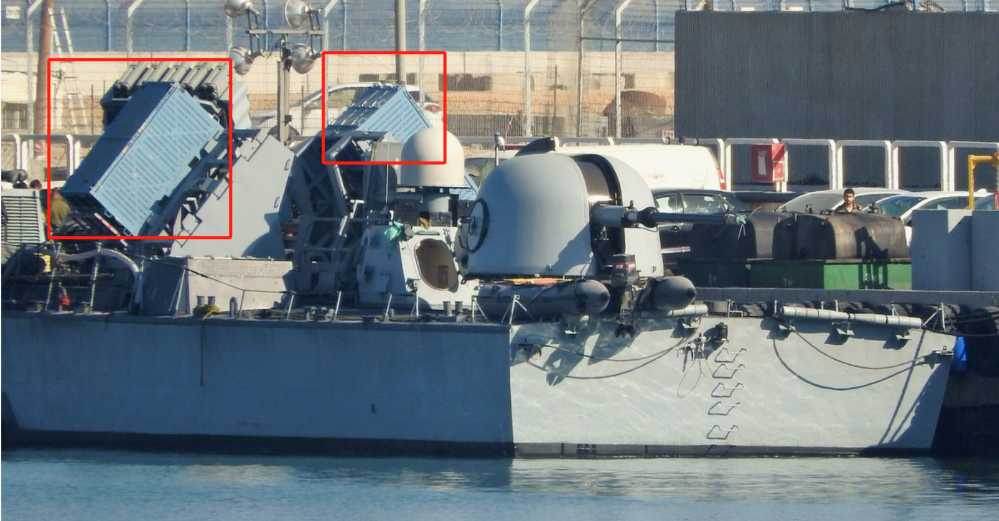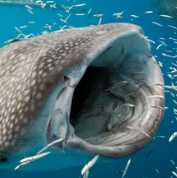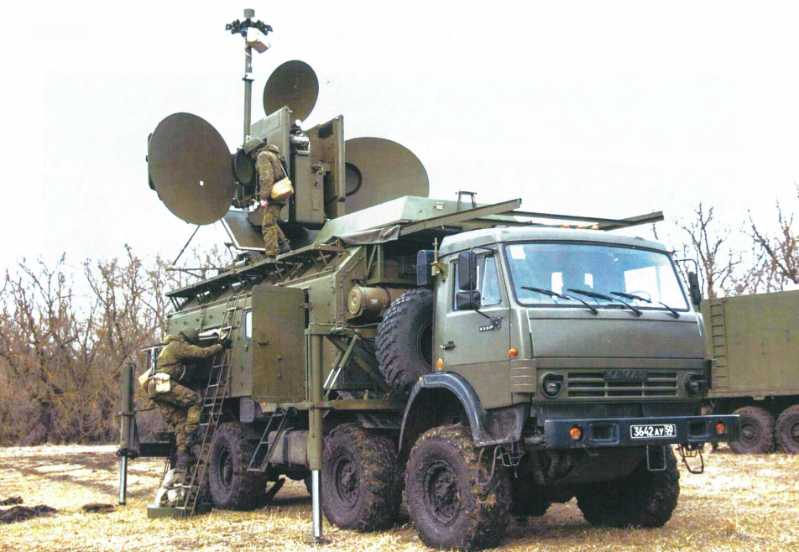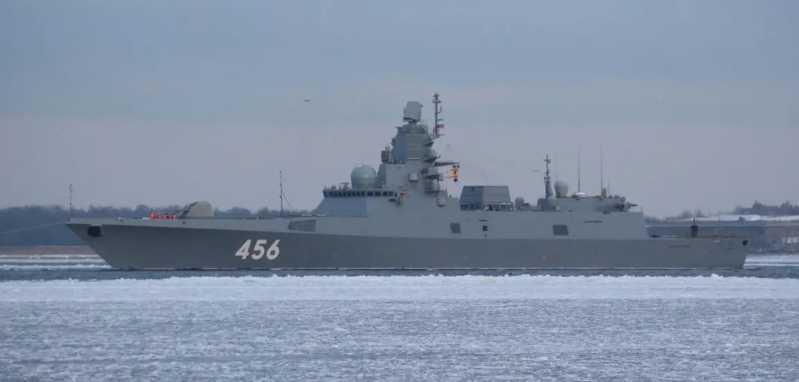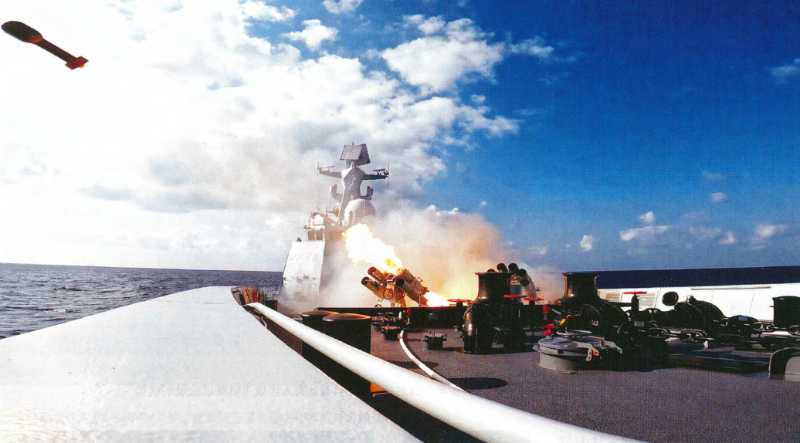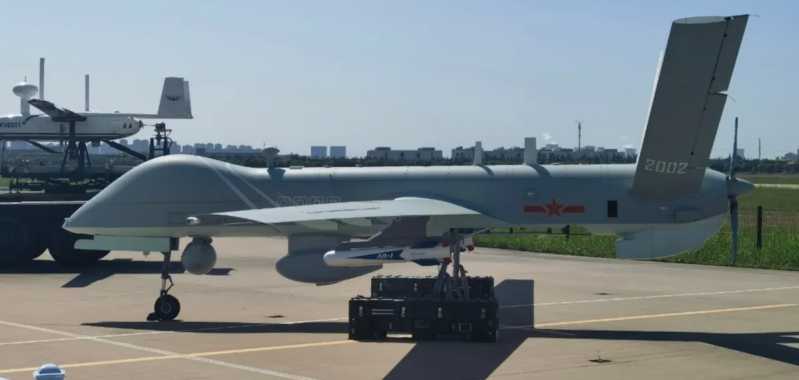Continuous innovation is one of the important reasons why Israeli weapons and equipment can always remain invincible on the battlefield in the Middle East. In view of the excellent combat capability demonstrated by the large-scale "Saar" 4 in actual combat, the Israeli Navy decided to further explore the development potential of the platform. It was also through optimizing and enlarging the hull size on the basis of the "Saar" 4, adopting more advanced electronic and weapon systems to improve and perfect the comprehensive combat performance and finally develop into a new model, which is the "Saar" 4.5. In this model, the Israeli Navy introduced the concept of standardized combat platform. This concept was quite forward-looking in the 1970s and 1980s, that is, different subtypes were derived from the same hull platform according to different tactical needs. Therefore, the "Saar" 4.5 eventually developed into two different versions: the "Alia" type that can carry helicopters and the conventional "Haze" type.
Model of helicopter carried: "Alia" type
Its development originated from the successful use of naval helicopter tactics in the Fourth Middle East War, that is, the missile boat formation used helicopters carried by landing ships to conduct early warning reconnaissance, tactical feints and attacks on enemy missile boats, which played an important role in ensuring that the missile boat formation completed its combat mission in the Latakia naval battle. After the war, Israel combined this successful experience and introduced the "Harpoon" helicopter landing system and "Dolphin" helicopter suitable for small surface ships from France. On the basis of the "Saar" 4, the length of the boat was increased, and the first sub-model of the "Saar" 4.5 was developed - the large missile boat "Alia" type that can carry helicopters. It is also the first member of the "Saar family" that can carry helicopters and has aviation support capabilities.
Overall situation
Its hull has been lengthened to enhance its load-bearing capacity. The length of the boat has been lengthened from 58 meters of the "Saar" 4 to 61.7 meters, the boat width is 7.6 meters, the draft is 2.5 meters, and the full load displacement has also been increased from 450 tons of the "Saar" 4 to 498 tons, approaching the limit of light frigates. The power system uses the same four MTU 16V 956 TB91 diesel engines as the "Saar" 4, with an output power of 11.03 MW and 4 Axle propulsion. The maximum speed is only 31 knots, which is a "snail speed" compared with the same-class missile boats of the same era. The endurance is 3,000 nautical miles/17 knots or 1,500 nautical miles/30 knots, and the crew is 53 people.
The overall structure of the "Alia" type is designed to be very compact. Its most distinctive appearance feature is the installation of a simple fixed helicopter hangar and flight deck at the rear of the superstructure. It became one of the leaders of the trend of large aircraft-carrying missile boats in that era. The "trendsetters" of the same period also included the Manama class and Moulay Jibi class built by the German Lürssen Company for the Bahrain and UAE navies, and the Esmeraldas class missile boats built by the Italian Fincantieri Company for the Ecuadorian Navy.
Weapons and equipment
The combat missions of this type of boat mainly include attacking enemy surface ships and coastal targets, air defense and anti-missile, and coordinating with helicopters for formation command and relay guidance. According to the mission requirements, the "Alia" type has made some adjustments in the selection of weapon systems compared to the "Saar" 4 type, with a focus on aviation support capabilities. Although the hangar and flight deck occupy about 1/2 of the upper deck space of the entire boat, it still installs a complete air defense and anti-ship weapon system in the remaining small space of the boat except for the navigation bridge. From front to back, a "Bofors" 40mm single-barrel naval gun with a semicircular shield is installed in the center of the bow deck, and then replaced with a General Dynamics "Phalanx" 6-barrel 20mm close-in defense gun for close-range air defense and anti-missile operations. Behind the main gun is a 4-unit fixed "Gabriel" 2 anti-ship missile launcher. The forward firing range is blocked by the "Phalanx" system, so it is fired at a certain angle to the longitudinal centerline of the entire boat towards the bow on both sides, used to attack enemy small and medium-sized ships at medium and short distances. The space between the hangar and the main mast was not enough to install two conventional four-mounted "Harpoon" anti-ship missile launchers, so two twin-mounted "Harpoon" missile launchers were installed in half. The range of the "Harpoon" missile is more than three times that of the "Gabriel 2", and it is used to deal with large and medium-sized enemy ships. In addition, the whole boat is also equipped with two "Oerlikon" 20mm single-barrel naval guns and four 12.7mm heavy machine guns for patrol during cruising.
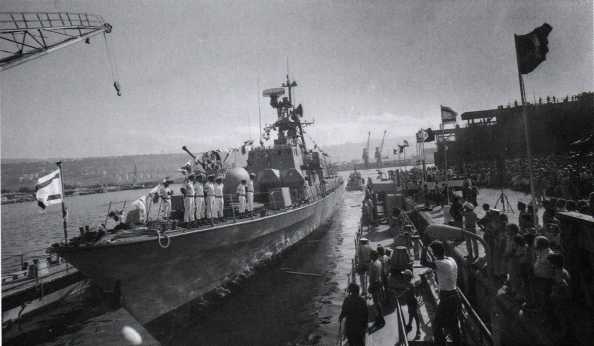
In terms of helicopters, it can carry and operate a Bell AB-206 "Jet Commando" helicopter to provide over-the-horizon guidance for the ship’s anti-ship missiles. Due to space limitations, the "Aliya" can no longer be equipped with two 324mm torpedo launchers and other anti-submarine weapons like the "Saar" 4, but the French SA-366G "Dolphin" helicopter it carries later can independently perform anti-submarine, anti-ship, search and rescue, relay guidance and other tasks. It is equipped with the French "Harpoon helicopter landing assistance system, which can well fill in the puzzle of anti-submarine warfare. It can be said that the introduction of the aviation support system has brought the comprehensive combat performance of the "Saar" series missile boats to a new height.
The electronic equipment of this type of boat has not been greatly improved in performance. It is equipped with the Reshet combat command system developed by the domestic IAI company. A Thomson-CSF G-band TH-D 1040 "Neptune" air/sea search radar is installed on the top of the main mast, and a classic IJ-band Celenia RTN-10X "Orion" fire control radar is installed on the front support platform of the main mast. In addition, it is also equipped with NS-9003/9005 active/passive electronic reconnaissance and jamming systems. Compared with the same type of ships in Western countries of the same era, the electronic equipment equipped on the "Alia" type is not advanced, but compared with the same-level opponents of the Arab navies, it is undoubtedly more advantageous in terms of reliability and miniaturization.
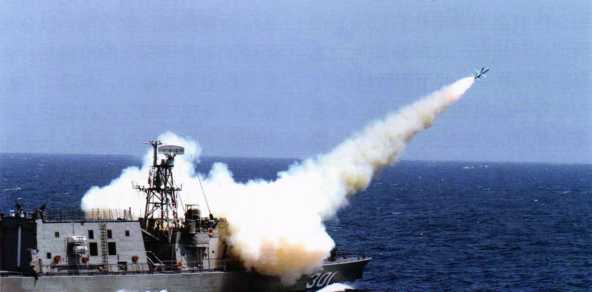
renamed "Huracan" (ARM Huracan, hull number 301) and "Tormenta" (ARM Tormenta, hull number 302). The picture shows the "Huracan" launching the "Gabriel" 2 anti-ship missile.
The "Alia" type also attaches great importance to the passive defense capability of the whole boat. Its jamming rockets are also "beyond the scope". There are 3 types of launchers, namely 4 groups of 24-tube 4-tube installed on both sides of the front superstructure and 1 45-tube jamming bomb launcher installed on the top of the hangar. They all have good firing ranges and can launch rocket jamming bombs of various purposes and types, which can completely cover the attack direction of each missile. It is the last line of defense of the whole boat except for the close-in defense gun.
Construction and use
A total of two boats of this type were built. The first boat was named "Alia". It was launched at the Haifa Shipyard in July 1980 and entered service in August of the same year. The second boat "Geoula" (INS Geoula, also known as "Redemption") was launched in October 1980 and entered service on December 31 of the same year.
In general, the comprehensive combat capability of the "Alia" type did not meet the expectations of the Navy. For example, the anti-ship and anti-submarine combat capabilities have not been substantially improved (or even weakened), the improvement of the living environment is also very limited, and the use of ship-borne helicopters is also greatly restricted. Therefore, the development is not successful. Among the descendants of the prosperous "Saar" family, only two boats of this type were built and then stopped. The reason is that, on the one hand, the center of gravity is too high, the seaworthiness is poor, and the boat size is still too small. Even in not-so-bad sea conditions, the take-off and landing of ship-borne helicopters is still full of risks. Practice has proved that the practical value of missile boats that often need high-speed maneuvers to carry helicopters is not great, and they cannot play the original tactical requirements of aircraft-carrying missile boats. In most cases, the helicopter deck of this type of boat is equipped with a davit, which is used to launch and recover rigid inflatable boats to perform interception, inspection and other tasks. The hangar has lost its original use and has become the best mission preparation room for special warfare commandos. The expensive "Harpoon" landing aid system has become a complete decoration, resulting in a huge waste of functions and limiting the installation space of other combat weapon systems. On the other hand, the procurement cost of the entire aviation combat system including ship-borne helicopters and landing aid systems is too high, resulting in a low cost-effectiveness of the entire boat, and large-scale construction is obviously inappropriate. Therefore, compared with the brilliant achievements of her brothers of the same clan, the entire service career of the "Alia" type seems to be more or less mediocre and can hardly be called outstanding.
In 2004, the Aliya and the Qaiula were withdrawn from the Israeli Navy’s combat sequence. Although the two boats were not used successfully in the Israeli Navy, they were sold to the Mexican Navy in the same year and renamed as ARM Huracan (hull number 301) and ARM Tormenta (hull number 302). They were particularly eye-catching among the many second-hand American ships in the Mexican Navy. Before the transfer, Israel removed the davits on the flight deck, restored the aviation operation capability, removed the Harpoon anti-ship missile launcher and the jammer launcher on the top of the hangar, and only retained the Gabriel 2 anti-ship missile launcher and the Phalanx close-in defense gun on the bow deck. This greatly reduced the offensive and defensive capabilities of the entire boat. The advantage is that the center of gravity is further lowered, which is more conducive to cruising, and the procurement and use costs are also lower. It is worth mentioning that the E-2 Hawkeye early warning aircraft, which once created an invincible myth in the air battle in the Bekaa Valley and made great contributions to the Israeli Air Force, was also sold to the Mexican army.
David "Venom Bee": "Haze" type
While building the "Alia" type, the Israeli Navy required the design department to re-design the heavy-armored design on the same hull platform, focusing on strengthening the anti-ship capability and upgrading the electronic system, thus deriving another type of heavy-armed missile boat with extremely strong attack capability, which is the "Haze" type.
From 1981 to 2003, a total of 8 "Haze" type ships were built, all of which were built by the Haifa Shipyard. The first ship "Romat" (INS Romat, also known as "Lance") was launched on October 30, 1981 and entered service on the same day. The second ship "Cochet" (INS Keshet (also known as the "Bow") was launched in October 1982 and commissioned in November of the same year. Although the keel of the third boat, INS Hetz (also known as the "Arrow"), was laid in 1984, it was not launched until October 1990. As a test boat, it conducted onboard tests of some systems to be equipped on the "Saar" 5-type light frigate. It was commissioned in February 1991. The construction time span between boats 2 and 3 is relatively long, which is rare. Boats 4 to 7 are INS Kidon (also known as the "Javelin"), INS Tarshish, INS Yafo and INS Herev (also known as the "Sword"). The last boat No. 8, INS Sufa (also known as "Storm"), was not completed and put into service until 2003. The construction time span of the entire model exceeded 20 years, so the technical status of each construction batch has been adjusted, and the appearance characteristics presented are also different. To this day, this type of boat is still one of the main surface ships of the Navy.
Small size
The main dimensions of the first three "Haze" type boats are consistent with the "Alia" type, and the length of the last five boats is shortened to 58 meters, with an empty displacement of 352 tons and a full load displacement of 488 tons (10 tons less than the "Alia" type), a self-sustaining capacity of 12 days, and a crew of 53 people. The cross-sectional lines of the "Haze" type continue the linear design of the "Saar" 4 type. The cross-sectional shape of its bow is an outward-flared V-shaped hull, the freeboard part is relatively large, there are wave strips under the bow, and the four main engine exhaust ports are located at the waterline at the rear of the hull. The tail is a small-radius rounded bilge, which has good roll damping performance and directional stability. Compared with its "predecessors", the "Haze" type hull began to introduce low-detectable design to reduce radar signal characteristics, which is most prominent in the top of the superstructure, which is a rear-tilted, fully enclosed, lightweight aluminum main mast with a more compact structure and a simple appearance without losing its heroic spirit. Most of the electronic equipment of the entire boat is integrated on it, including air/sea search radars, fire control systems and electronic warfare systems. The new mast is one of the most significant appearance features that distinguish the "Saar" 4 type from the "Haze" type.

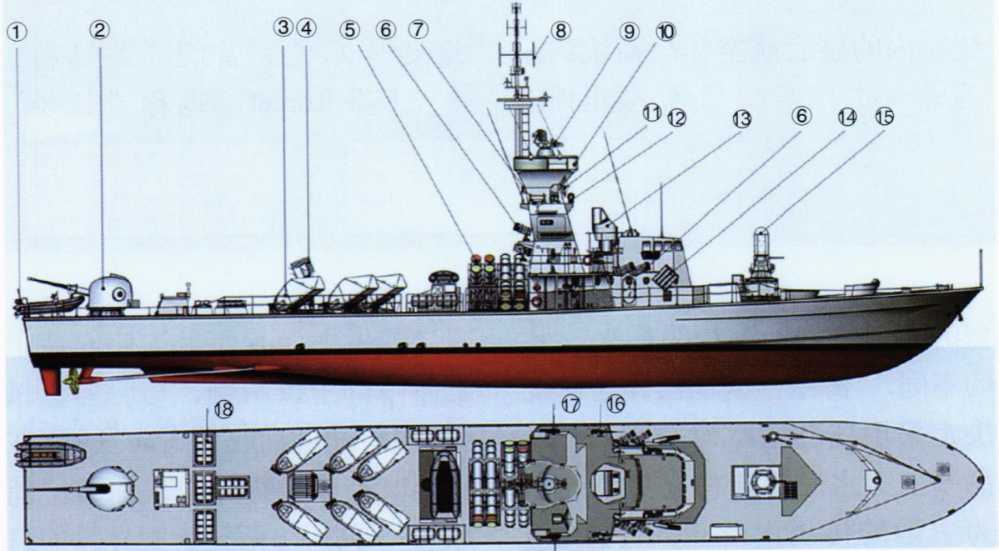
Enough power
The power system of the "Haze" type uses four MTU16V 538 TB93 diesel engines with stronger output power (some boats use MTU 396TE diesel engines), with a total output power of 12.2 megawatts, which is 10.6% higher than that of the "Alia" type. The maximum speed reaches 32 knots, and the endurance is also 3,000 nautical miles/17 knots or 1,500 nautical miles/30 knots, which is fully capable of covering the combat areas in the Mediterranean and Red Sea. Compared with the missile boats of the same level built by Western European countries at the same time, the propulsion power of the "Haze" type is slightly insufficient. For example, the 143A type of the Federal German Navy, the Willymoir class of the Danish Navy, and the Hukin class of the Swedish Navy all have a maximum speed of 36 to 40 knots, which is 4 to 8 knots faster than the "Haze" type. Even the early "Saar" 2 type has 40 knots.
Strong firepower
Compared with the "biased" "Alia" type, the "Haze" type has a more complete and perfect weapon system, with complete air defense, anti-missile, anti-ship, and anti-submarine combat capabilities. The firepower index of the same level of tonnage is unprecedentedly strong, which can be called the "poison bee" at sea. From the front to the back of the boat, a "Phalanx" 6-barrel 20mm close-in defense gun is used in the center of the bow deck for the end defense of the entire boat, and can also deal with small close-range sea targets when necessary. Unlike the Phalanx systems of the Saar IV and Alia, which were modified later, the Hydes was designed to use this type of gun as the main gun, and the tradition of using the CIWS as the main gun of the navy’s main surface ships officially began. Two 4-unit Harpoon anti-ship missile launchers are installed at the rear of the superstructure, firing towards both sides. Six Gabriel II anti-ship missile launchers, 3 on each side, are installed on both sides of the middle deck of the hull, firing towards the bow at a 45° angle to the longitudinal axis of the hull (they were removed in the later modification, and only the Harpoon missiles were retained). The combination of two types of anti-ship missiles made the "Haze" type’s anti-ship attack capability even surpass the mainstream frigates of European countries at that time, but its tonnage was less than 1/6 of that of the mainstream frigates.
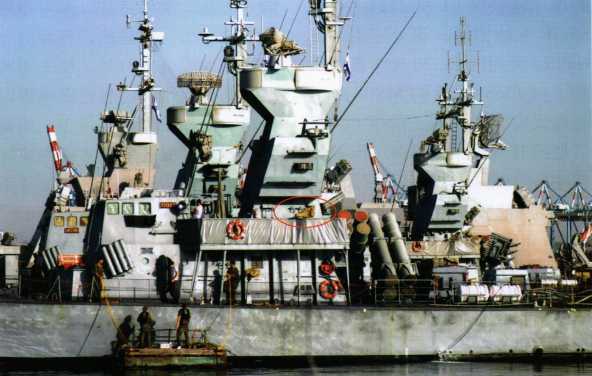
2 or 4 8-unit ship-to-air missile vertical launch systems were installed in front of the small deckhouse at the stern of the boat. The "Haze" type is also one of the smallest surface ships equipped with a vertical launch system. This type of launch system has a compact structure and strong platform adaptability. It is used to launch the "Barak" 1 ship-to-air missile with a range of 10 kilometers and a flight speed of 2 Mach. In addition to Israel, the navies of Chile, Singapore and other countries have also introduced this missile system, and the Indian Navy is its largest foreign user. At the rear of the boat, an "Oto Melara" 76mm single-barrel rapid-fire gun has returned, enhancing the boat’s anti-sea and anti-air defense capabilities. In addition, 2 to 4 M2 12.7mm heavy machine guns are installed on the movable platforms on both sides below the main mast.

The whole boat is equipped with three different types of rocket jammer launchers, namely: an Elbit "Deseaver" 72-unit rocket jammer launcher installed on the top of the deckhouse in the middle and rear of the boat, with the launch tubes arranged in an inverted concave shape, which can launch in almost all directions; there are also 4 groups of 12 units installed below the rear of the main mast and 1 group of 4 units installed below the two sides of the navigation bridge. Sometimes a group of 6 units is temporarily added to the left front of the navigation bridge. They have different ranges and functions. The Navy has only strengthened and never weakened the equipment of such weapons.
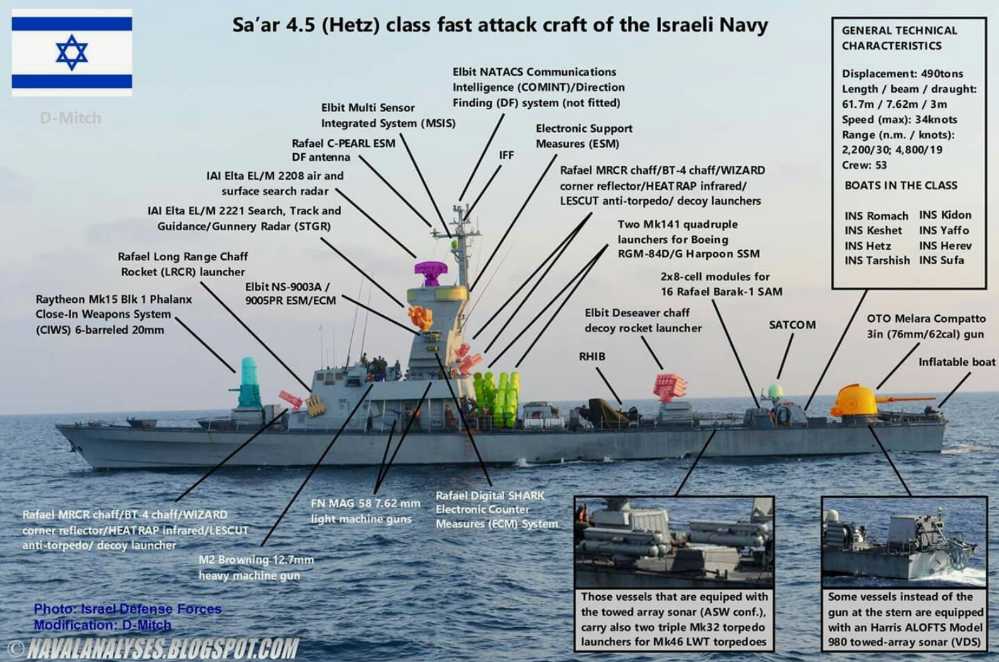
The "Haizi" type also inherited the anti-submarine combat capability of the "Saar" 4 type. Public data shows that at least two "Haizi" types have removed the 76mm rapid-fire gun at the stern, and installed the same square deckhouse as the "Saar" 4 type at the same position to accommodate the submarine-hunting weapon of this type of boat - a towed variable depth sonar. Two triple-mounted 324mm light torpedo launchers are installed on both sides of the rear deck of the hull to launch Mk 46 light torpedoes. It can be seen that its anti-submarine weapon system configuration has reached the level of mainstream missile frigates in Western countries. In 2017, a "Haze" type added two "Iron Dome" missile launchers in the middle of the hull to intercept homemade rockets launched by Hamas militants from the Gaza Strip to Israeli cities at sea.
Radar detection capability has been greatly improved.
The air/sea search radar, combat command system, electronic reconnaissance and jamming system of the "Haze" type are basically the same as those of the "Alia". The main electronic equipment includes an Israeli Elta EL/M-2208 air/sea search radar (an improved version of the TH-D 1040 "Sea Search Radar Wangxing" search radar) installed on the top of the main mast, and two Elta EL/M-2221 GMSTGR fire control radars installed on the left and right platforms in the middle of the main mast. In addition, there is a Galileo OG20 optical director and an Elop MSIS optoelectronic director installed just in front of the main mast. In the later modification and upgrade, the "Neptune" radar on the top of the main mast of some "Haze" type was replaced with the E/LM-2258 "Alpha (Advanced Lightweight PhasedArray Naval Radar, ALPHA) new multi-function phased array radar, the overall shape is more modern, the battlefield situation awareness and air defense combat capabilities of the whole boat have been effectively improved, in addition, the tactical display terminal and satellite communication system have been upgraded.
Looking at the development process of the "Alia" type and "Haze" type missile boats, the original intention of the two is the same, but the development results are very different. As a typical failure, the "Alia" type has been "married" to Mexico for nearly 20 years, while the "Haze" type developed at the same time is still an indispensable main force of the navy. Obviously, in the face of non-traditional security threats, the original idea of the combat use of the two types of boats has been difficult to realize. For example, in combat use, the two types of boats need to form a complete offensive and defensive capability through a mixed formation, and the comprehensive cost-effectiveness is not high. Therefore, the Israeli Navy had to retire and sell the "Alia" type, and at the same time continuously upgraded the "Haze" type to make up for the anti-submarine shortcomings after the retirement of the "Alia".
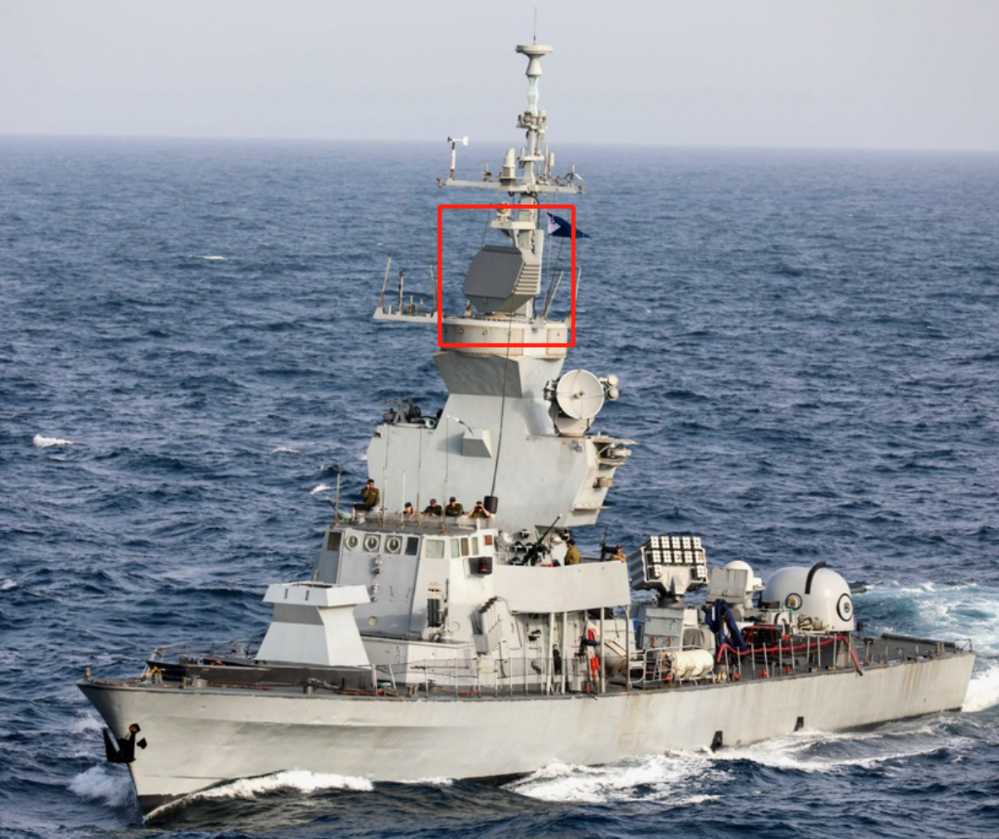
The two sub-models of the "Saar" 4.5 type undoubtedly represent the most advanced level of contemporary missile boats in the Middle East, and are the crystallization of the Israeli military ship industry, but they are not perfect. From the perspective of comprehensive combat performance, the Saar 4.5 is a technical extension of the Saar 4, with a slightly larger size. Although its combat performance has been improved to a certain extent, it has not been substantially improved. The main reason is that it is limited by the original design. The small size of the boat limits its possibility of further expanding its combat range. The performance potential of this German-origin platform has been fully tapped, and there is not much room for performance upgrades. Especially after entering the 1990s, the geopolitical structure of the Middle East has undergone major and profound changes, and Israel’s defense policy and weapons and equipment development concepts have also undergone great changes. Small missile boats can no longer meet the increasingly complex and severe maritime defense environment. The development of Israeli naval surface ships has entered a bottleneck period, and a new type of surface ship with larger size and more comprehensive combat capabilities is urgently needed to break this situation. Therefore, the Saar 4.5 temporarily puts a pause on the development history of Israeli naval missile boats, marking the end of the era of small ships dominating near-shore operations.
